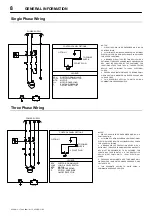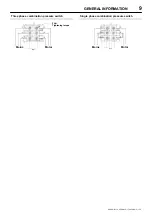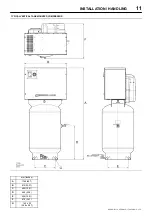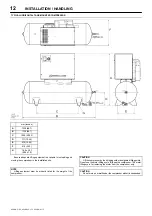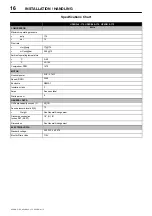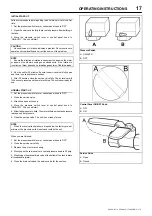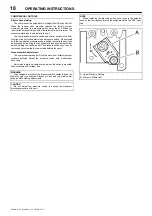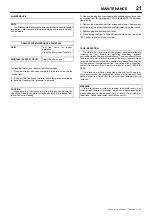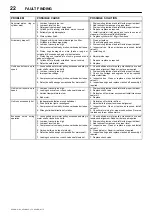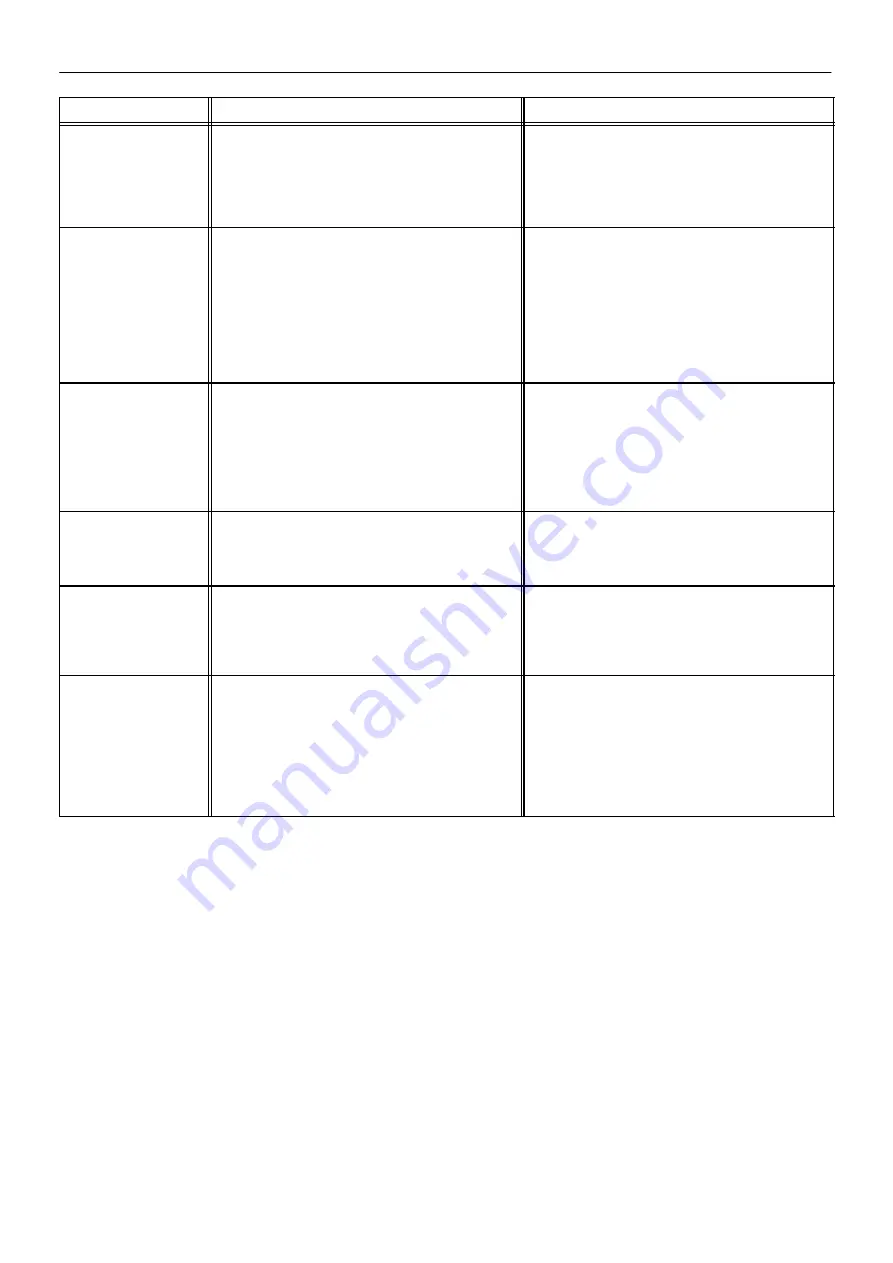
FAULT FINDING
22
UP6RD–5–175, UP6RM–5–175, UP6RD–5–175
PROBLEM
POSSIBLE CAUSE
POSSIBLE SOLUTION
Abnormal piston, ring or
cylinder wear
1. Lubricant viscosity too low.
2. Lubricant level too low.
3. Detergent type lubricant being used.
4. Cylinder(s) or piston(s) scratched, worn or scored.
5. Extremely dusty atmosphere.
6. Worn cylinder finish.
1. Drain existing lubricant and refill with proper lubricant.
2. Add lubricant to crankcase to proper level.
3. Drain existing lubricant and refill with proper lubricant.
4. Repair or replace as required.
5. Install remote air inlet piping and route to source of
cleaner air. Install more effective filtration.
6. Deglaze cylinder with 180 grit flex–hone.
Air delivery drops off
1. Clogged or dirty inlet and/or discharge line filter.
2. Air leaks in air discharge piping.
3. Lubricant viscosity too high.
4. Compressor valves leaky, broken, carbonized or loose.
5. Piston rings damaged or worn (broken, rough or
scratched). Excessive end gap or side clearance.
6. Piston rings not seated, are stuck in grooves or end
gaps not staggered.
7. Cylinder(s) or piston(s) scratched, worn or scored.
8. Defective safety/relief valve.
1. Clean or replace.
2. Check tubing and connections.
3. Drain existing lubricant and refill with proper lubricant.
4. Inspect valves. Clean or replace as required. Install
valve kit.
5. Install ring kit.
6. Adjust piston rings.
7. Repair or replace as required.
8. Replace.
Unit does not come up to
speed
1. Loose beltwheel or motor pulley, excessive end play in
motor shaft or loose drive belts.
2. Lubricant viscosity too high.
3. Improper line voltage.
4. Compressor valves leaky, broken, carbonized or loose.
5. Defective ball bearings on crankshaft or motor shaft.
1. Check beltwheel, motor pulley, crankshaft, drive belt
tension and alignment. Repair or replace as required.
2. Drain existing lubricant and refill with proper lubricant.
3. Check line voltage and upgrade lines as required.
Contact electrician.
4. Inspect valves. Clean or replace as required.Install
valve kit.
5. Inspect bearings and replace crankshaft assembly if
required.
Unit is slow to come up to
speed
1. Lubricant viscosity too high.
2. Leaking check valve or check valve seat blown out.
3. Ambient temperature too low.
4. Bad motor.
1. Drain existing lubricant and refill with proper lubricant.
2. Replace check valve.
3. Relocate unit to warmer environment.Install crankcase
heater kit.
4. Replace.
Unit runs excessively hot
1. Inadequate ventilation around beltwheel.
2. Drive belts too tight or misaligned.
3. Compressor valves leaky, broken, carbonized or loose.
4. Wrong beltwheel direction of rotation.
1. Relocate unit for better air flow.
2. Adjust belts to proper tension and alignment.
3. Inspect valves. Clean or replace as required. Install
valve kit.
4. Check motor wiring for proper connections. Reverse
two leads on three–phase motors.
Excessive noise during
operation
1. Loose beltwheel or motor pulley, excessive end play in
motor shaft or loose drive belts.
2. Lubricant viscosity too high.
3. Lubricant level too low.
4. Compressor valves leaky, broken, carbonized or loose.
5. Carbon build–up on top of piston(s).
6. Defective ball bearings on crankshaft or motor shaft.
7. Leaking check valve or check valve seat blown out.
1. Check beltwheel, motor pulley, crankshaft, drive belt
tension and alignment. Repair or replace as required.
2. Drain existing lubricant and refill with proper lubricant.
3. Add lubricant to crankcase to proper level.
4. Inspect valves. Clean or replace as required.Install
valve kit.
5. Clean piston(s). Repair or replace as required.
6. Inspect bearings and replace crankshaft assembly if
required.
7. Replace check valve.
Summary of Contents for UP6RD-5-175
Page 2: ......

